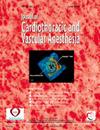Practice Advisory for Postoperative Pain Management of Cardiac Surgical Patients: A Report by Society of Cardiovascular Anesthesiologists
IF 2.3
4区 医学
Q2 ANESTHESIOLOGY
Journal of cardiothoracic and vascular anesthesia
Pub Date : 2025-03-01
DOI:10.1053/j.jvca.2024.10.014
引用次数: 0
Abstract
Moderate to severe pain after cardiac surgery is relatively common, which increases the risk of postoperative cardiopulmonary complications and delays hospital discharge. Opioids have been useful agents for postoperative pain control after cardiac surgery, but are associated with serious adverse effects. As a result, multimodal analgesia has been adopted widely to decrease reliance on opioids for treating postoperative pain, reduce opioid-related adverse effects, and promote early recovery. The advent of fascial plane blocks has expanded the use of regional analgesia for pain management after cardiac surgery that was otherwise limited due to the fear of devastating neurological sequelae in the setting of systemic anticoagulation. This practice advisory reviews and evaluates the recent literature related to the use of pharmacological and non-pharmacological therapies to treat pain after cardiac surgery to help providers with the selection of appropriate pain management interventions for their patients.
心脏手术患者术后疼痛管理的实践建议:心血管麻醉师学会报告。
心脏手术后中度至重度疼痛相对常见,这增加了术后心肺并发症的风险,并延误了出院时间。阿片类药物是心脏手术后疼痛控制的有效药物,但与严重的不良反应相关。因此,多模式镇痛已被广泛采用,以减少对阿片类药物治疗术后疼痛的依赖,减少阿片类药物相关的不良反应,促进早期恢复。筋膜平面阻滞的出现扩大了局部镇痛在心脏手术后疼痛管理中的应用,否则由于担心在全身抗凝设置中破坏性的神经系统后遗症而受到限制。本实践咨询报告回顾和评估了最近有关使用药物和非药物治疗心脏手术后疼痛的文献,以帮助提供者为患者选择适当的疼痛管理干预措施。
本文章由计算机程序翻译,如有差异,请以英文原文为准。
求助全文
约1分钟内获得全文
求助全文
来源期刊
CiteScore
4.80
自引率
17.90%
发文量
606
审稿时长
37 days
期刊介绍:
The Journal of Cardiothoracic and Vascular Anesthesia is primarily aimed at anesthesiologists who deal with patients undergoing cardiac, thoracic or vascular surgical procedures. JCVA features a multidisciplinary approach, with contributions from cardiac, vascular and thoracic surgeons, cardiologists, and other related specialists. Emphasis is placed on rapid publication of clinically relevant material.

 求助内容:
求助内容: 应助结果提醒方式:
应助结果提醒方式:


